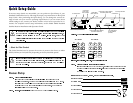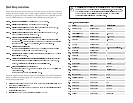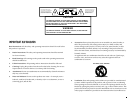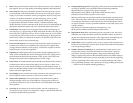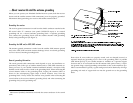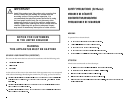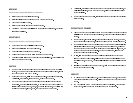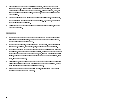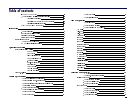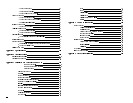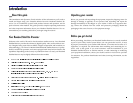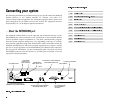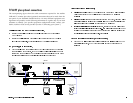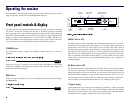
«$ERXWUHFHLYHUVDWHOOLWHDQWHQQDJURXQGLQJ
Before you can operate your Headend Satellite Receiver system, both the receiver
chassis and the satellite antenna LNB connection(s) must be properly grounded.
Information about grounding your receiver and satellite antenna follow.
*URXQGLQJWKHU HFHLYHU
The receiver ground connection is made from the shield
1
conductor attached to the
RF coaxial cable “F” connector (rear panel SATELLITE input) to an external
grounding rod via a receiver/antenna grounding block. A separate grounding
wire connects the grounding block (and the satellite antenna LNB grounding
block) to the grounding rod (see Figure 1).
*URXQGLQJWKH/1%DQGRU9+)8+)DQWHQQD
The antenna ground connection is made from the satellite LNB/antenna ground
and/or the VHF/UHF terrestrial antenna discharge unit to an external grounding
rod via a receiver/antenna grounding block.
*HQHUDOJURXQGLQJLQIRU PDWLRQ
The actual ground/cable connections made depend on your site installation re-
quirements, and on the type of satellite antenna and/or VHF/UHF terrestrial an-
tenna you have. If your satellite antenna installation includes a dual-port LNB,
both RF coaxial cables must be routed to the grounding block. When connecting RF
coaxial antenna cables to the grounding block, looping the antenna cables as
shown in the accompanying figure helps to direct moisture away from the
grounding block. Always choose the shortest route possible when connecting RF
coaxial cables to the receiver/antenna grounding block, and when connecting the
grounding wire(s) to the grounding rod.
1
Multi-strand (braided) shield that surrounds the center conductor of the coaxial
cable
Ensure that all wires/cables are properly routed, and are clamped/secured, as
required. Install the grounding rod as close to the grounding block as possible
(NEC 820-40 [USA]). If your satellite antenna is installed on a separate support
structure and/or is not located near the RF antenna cable point-of-entry, a dupli-
cate ground using a second grounding rod installed as close to the antenna as pos-
sible is recommended. Typically, a good earth ground can be obtained by driving a
grounding rod made of copper-clad iron into the ground next to the grounding
block.





